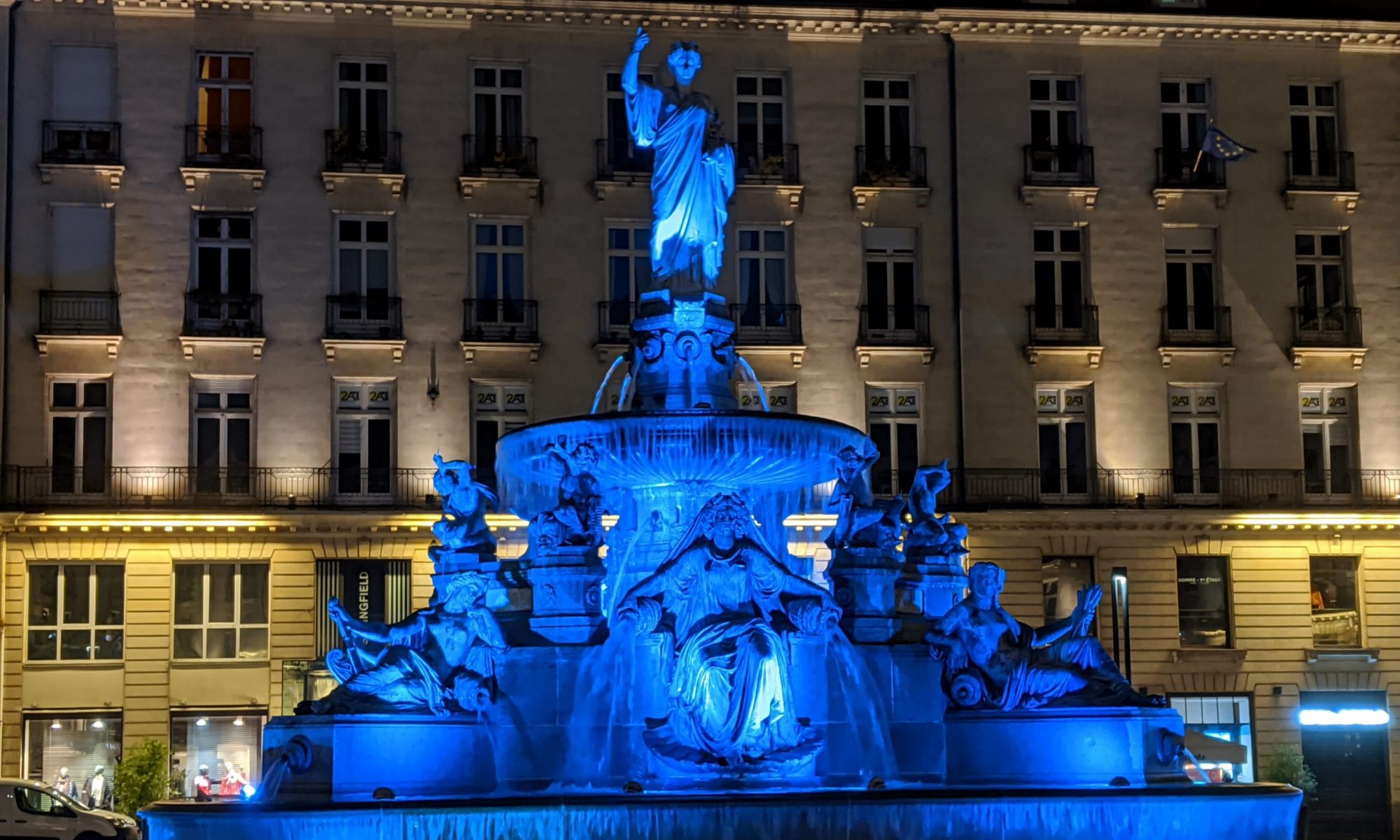
A friend recently introduced me to the TV series “Au Service de la France“, an absurd parody of a French spy agency in the 1960s (“A Very Secret Service” in English). The show debuted in 2015 and has two seasons totalling 26 episodes so far, with a third season in production. It was the first French series picked up by Netflix and marketed as “a Netflix original”, though it was originally developed by Canal (who abandoned it) and then by the network Arte. I’ve watched 3 episodes so far with the original French audio, both with and without French closed captions. It’s available with English subtitles as well.
I’m conflicted about the series. On the one hand, it is hilarious. The writers mock French attitudes at the time about Africa and Africains, Germany, women, bureaucracy, and more. The deadpan humor is well delivered and the skewering of 1960 French Gaullist culture is brutal. By myself I’m not expert enough on French culture to confirm that it lands for a French audience, but the critical reviews in France are positive as well. I am familiar enough with French culture to get the most of the jokes, I think, and they are pretty funny.
On the other hand, in order to mock these bad attitudes, the show puts them on full display. Yes, the characters showing these behaviors are loathsome and stupid. Yes, the show is self-acknowledgedly politically incorrect and generally irreverent. But while the typical French viewer may have seen the thing being mocked enough times that a little more won’t hurt, I’m not in that situation. I feel I am actively picking up 1960s French prejudices (and perhaps modern ones?) from watching the show. I’ve never viewed the American series “Mad Men”, but I gather its treatment of 1960’s American office culture has the same problem of amplifying sexism and misogyny while nominally criticizing it.

The attitudes towards Africa, with the backdrop of empire and decolonization, are really awful. An African delegation that comes to demand independence is first ignored, then laughed at derisively, then handed off to the intern who surprises everyone by producing a full-fledged constitution and administrative transition plan. Can’t have that, it seems, so the higher ups first try to corrupt the delegation with wine and women, then when that doesn’t work arrange for delegation members to be killed one at a time in innocent accidents. They offer heartfelt condolences to the remaining delegates each time, until the final surviving member accepts a much watered down governmental program, grieving and bewildered. The whole thing is horrid, both despite and because of the thick layer of buffoonery that pervades it all.
“C’mon, it’s a parody!”, the devil on my left shoulder says. Yes, but I am too suggestible. For example, I have a teenager in the process of learning to drive. For their benefit, I often narrate aloud what I’m thinking while I’m driving. Yesterday at an intersection I said to them: “Even though we have a green light here, pedestrians in the crosswalk always have right of way,” and then stopped myself before I could say “Well, except Algerians”. Yikes! I would never, ever have thought to introduce that topic gratuitously were it not for the constant stream of insulting and dehumanizing mentions of Algeria and Algerians in the show. Now I have to avoid imitating these horrible examples.
Some of the scenes mock safer targets, while making me feel extra good because I know enough to be in on the joke. For example, an interrogation of a captured East German spy includes a beaurocrat reading aloud a multiple choice questionnaire with items like:
Germany's territory is: a) big b) small c) too small The Third Reich should have lasted: a) 1 month b) 10 days c) 1000 years

I guess this doesn’t strike me as being as hurtful as the insults lobbed at Africa because of my sense that Germany is now prospering, while Africa is still suffering from its experience with France. But what do I know? Maybe raising these tropes of the expansionist and imperialist German serves to fuel ongoing dissension between France and Germany. I’d have to ask French and German viewers.
Unsurprisingly, humor is hard, and rough humor especially so. For now, I’m going to continue watching, as for me the show is a good source of French culture, especially latent attitudes that are no longer allowed to come to the surface much in modern French media. But I’m not so sure I’ll make it to the end of the series before I change my mind on the balance of benefits and harm.



















































